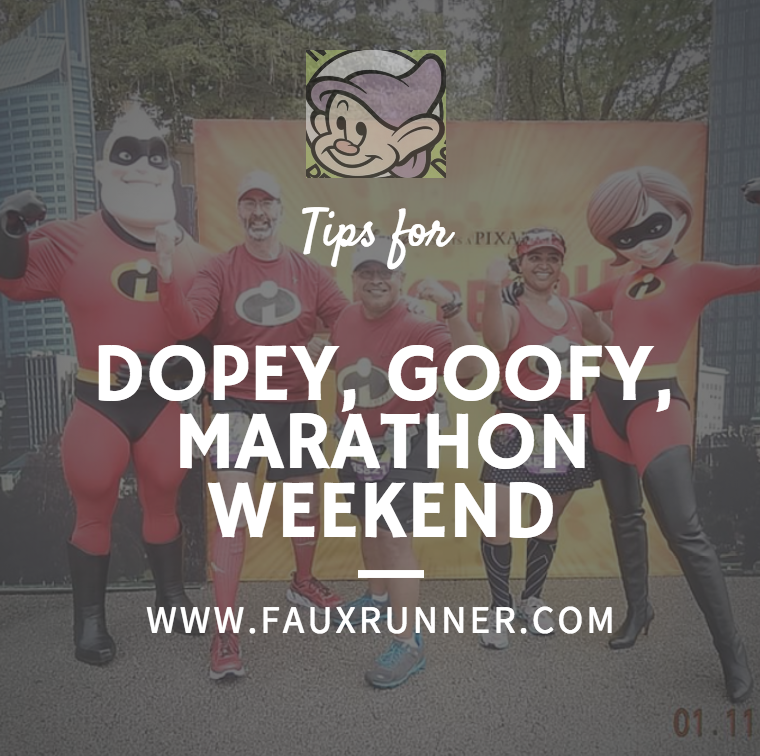LSR or LSD (Long Slow Run/Distance) – Just as the name indicates, it is the long slow run that you build up on. Experts recommend running this at 60-90+ seconds slower than race pace, insisting that the purpose should be to build endurance and time on your feet not to mimic the race day. However, I have also read some plans that recommends you run the last 1/3 of the long run at slightly less than race pace; every 3rd or 4th week.
Tempo – There are various forms of tempo runs, but the one I follow makes me get in a good warmup for about 1 mile. Then run as hard as I can, while maintaining pace all throughout, for 20-30 minutes and then cooldown. My coach says that the idea here is to learn to go father in those 30 minutes as you get stronger(after you build up to it during the course of the training program).
Speed Intervals – This can be anything you wish it to be. 30 seconds or a mile! Run fast for desired time/distance. Recover. Repeat. I always use my training program to tell me what intervals I’m doing. Now that I have a base built up, I do Yasso800s or mile repeats if I’m not following a training program (mainly because the half and full marathon is my preferred distance).
Recovery/Easy Runs – A very under appreciated, yet very essential run. Done at an easy conversational pace (similar to the LSR minus the distance) for 3-4 miles (for me), this releases your muscles and shakes out lactic acid that builds up from hard runs. Gives your muscles a chance to recover and make the next hard run even better.
I am a big believer/far of recovery runs, also often referred to as junk miles (to reach a certain mileage for the week). I always have atleast 2-3 miles in-between my hard run days. Although I’m a fairly new runner, I believe that continuos hard running to push your limits will break down your body without allowing it a natural chance to heal and invite injuries.
Yasso800s – Named after Runners World Chief Editing Officer, Bart Yasso. This is speed intervals at a distance of 800m or 2 laps around a 400m track (d’oh) or 0.5 miles. You build up to 10 of these repeats when you peak at your marathon training program. If you did 10 x Yasso800s at an average time of 5:00 minutes (time not the pace), then the theory is that you will be able to run a marathon in 5:00 hours. I’ve been told to add in a 10-20% buffer though.
Fartlek – After I’ve stopped giggling at the reaction of someone hearing this for the first time; I interject a couple of these in my easy runs. I run at an easy pace, then pick up for short duration (one mailbox or 10-15 seconds) and
ease back into my easy pace and continue my run. Repeat. Fartlek essentially means “Speed Play” in Swedish. I’ve also heard this being described unofficially as a “Pick Up” or a “Surge”.
Race Pace – The pace at which you expect to run your race. The way I understand it, you never run the distance of your race at race pace in training. Nothing technical about this, but I use a calculator to find my paces and times. My favorite calculator? MacMillan’s Running Calculator, of course. Makes training a breeze.
Negative Splits – Running the second half of a race faster than the first half. Personally, this works for me very well. My body takes its time to warmup and by going slow initially, I am able to have a strong finish. There are different views about this – some say that holding back in the beginning will cause to loose time that is very difficult to make up in the second half, especially in a longer distance like the marathon.
Anaerobic/Lactic Threshold – When an activity/run is done at an intensity that builds up lactic acid in muscles faster than it can be decimated. And hence the heavy legs. This pace cannot be usually sustained for too long.
V02 Max – VO2 max is the maximum capacity of the body to use oxygen and transport to other parts of your body during an activity. The higher the number, the more fit you are. This is a scientific test measured in labs and controlled environment (yes, one of the those places where you run on the treadmill with a mask and wires hooked up to you).
The Wall, The Bonk, The Inner Demon, Zelda (as my Coach has named hers) – Scientifically, this happens when your body’s glycogen stores are spent and you feel like you have hit a wall. Jeff Galloway says that the wall is within close proximity of your longest training run. My coaches say that the wall can be avoided or atleast pushed back by fueling correctly right from the beginning and by not going out too fast in the beginning. I feel that my inner demon comes out worst when I hit the wall and all my reasoning collapses.
Runners High – The other extreme of the Wall. An intense feeling of happiness and exhilaration that comes over after a while of running, supposedly due to endorphins (“Exercise produces endorphins, Endorphins make people happy. Happy people don’t shoot their husbands. They just don’t” – Reese Witherspoon in Legally Blonde). I almost always get a high when I run long distance, and mine stays with me for a long time. Any wonder that I like distance running so much?
Source: Jeff Galloway, Hal Higdon, My Coaches at Get Fit Atlanta








